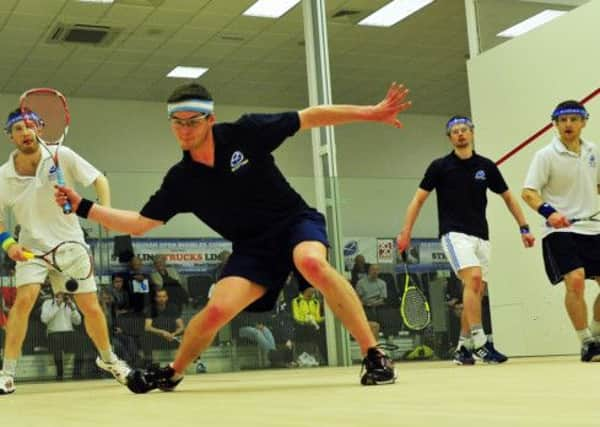Scotstoun: Squash rallies against its decline


That, at least, was the message yesterday at Scotstoun, venue for the squash event at next year’s Commonwealth Games. Not only was the new facility staging its first meaningful competition – a doubles tournament that will reach its conclusion this afternoon – it was giving Scotland’s leading players a welcome opportunity to meet the criteria for Glasgow 2012.
Doubles was the main reason squash was introduced to the Commonwealth Games in 1998, but the format is so rare on the professional circuit that qualifying events have to be manufactured. Hence, this weekend’s gathering of the best Scotland, England, Wales and Australia have to offer.
Advertisement
Hide AdAdvertisement
Hide AdAmong them is Alan Clyne, Scotland’s No 1, who also happens to be ranked 30 in the world. He has already reached the singles standard, courtesy of two recent victories, but his biggest medal chance is alongside Harry Leitch. Together they reached the semi-finals at the 2010 Games in Delhi, and while their places in the team will not be confirmed until early next year, they fancy their chances of going one better in Glasgow.
“I would like to think so,” says Clyne. “We came so close last time, only just losing out to the Aussies in the semi-final. With another four years’ experience, we are now reaching our peak age, so it all bodes well.
“The singles will be tough. I’m hoping for a medal, but the English are very strong, with three guys in the top ten. I’ll definitely have to improve my game, but I can’t see why it’s not possible, especially with the support of a home crowd. With that behind me, and the TV coverage, it’s going to be quite a thrill.”
The spectacle of all that took a bit of visualising yesterday. The courts – six singles, which can be converted into four doubles – are up and running, but there are no grandstands yet, and no show court, which is a bit of a touchy subject in these quarters.
An all-glass centrepiece, to be constructed on an adjoining piece of land, will be linked to the existing complex by a tunnel, but the temporary structure, complete with 2,000 seats, is to be taken down and shipped to another country after the Games.
So much for legacy, says John Dunlop, chief executive of Scottish Squash and Racketball. “It’s like having the back end of a BMW and not bothering with the front,” he says. “Their plan is to spend nearly £1m of public money putting something up that they are going to take down at the end of the Games. It means that I won’t be able to bring any more big events here.”
It is the one sore point for Scottish squash at a time when they seem to be optimistic about everything else. The Scotstoun facility is the first in this country to be built as a permanent venue for competitions. After the Games, it will be available to the general public, which is more than can be said for most Scottish squash courts, traditionally the preserve of private-school pupils and club members.
Dunlop is anxious to broaden the game’s appeal by introducing it, in all its simplified forms, to a new generation. A single-wall version has captured the imagination of many children they have worked with. “We are the governing body for bashing a ball against a wall,” says Dunlop. “Put that in. It doesn’t matter what ball or racket you’re using. It’s a kind of primordial thing, like football’s tanner ba’ tradition. We’ve been taking it into Easterhouse, all sorts of places. Kids don’t know the baggage, the public-school background. I wouldn’t be at all surprised if we are looking at another boom five years from now.”
Advertisement
Hide AdAdvertisement
Hide AdBy then, squash could be preparing for its introduction to the Olympics. It is on a shortlist of three sports hoping to be added to the programme for 2020. “That would make a big difference,” says Clyne. “It would push the sport in other countries, bring more funding and encourage more youngsters to play.”
Roger Flynn, the national coach, points out that, while Clyne is 26, the two men giving chase in the Scottish rankings are 20 and 19, which suggests a bright future. He also says that, for the past two years, Scotland has been fourth in Europe behind England, France and Germany. “We are punching above our weight,” he says.
All they need now is a few more spectators, which is why, in the doubles format, squash has lowered the “tin”, a strip on the front wall, over which every ball has to be hit. The thinking is that it will create more opportunities for winning shots and therefore shorter, more exciting rallies. There weren’t many to watch them at Scotstoun yesterday, but there will be next year.